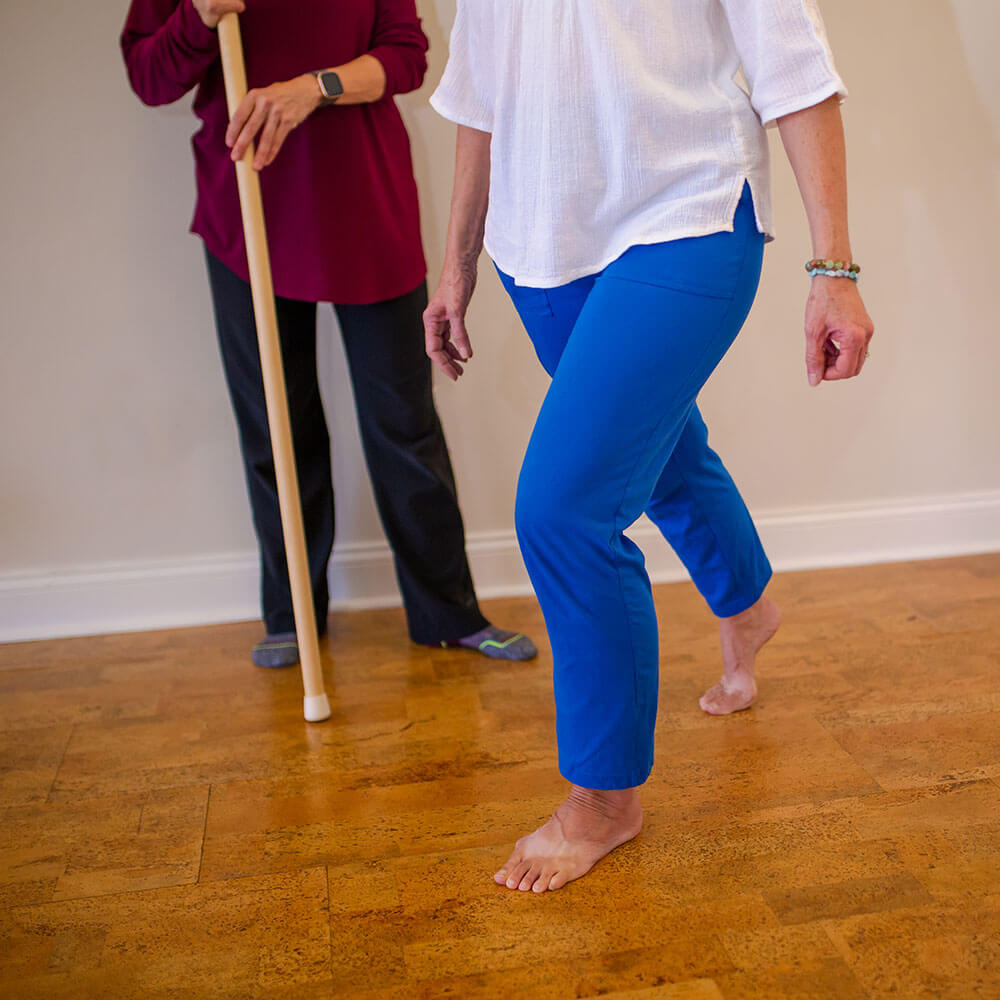I talk and write a lot about finding the right moves for your body, but what does that mean? How many moves are there, really?
Well, lots, actually. There are thousands of variations on moves you may have seen – movements you think of as exercises with names, like lunges, squats, push-ups, planks and even yoga poses.
There are even more micro- and macro-movements contained within those, as within any activity — whether that’s washing dishes, playing a sport, preparing a spring garden, getting in and out of a car or taking an exercise class.
More to the point, there are lots of interim steps — you might think of them as neuromuscular re-programming — along the way to overcoming what your body is struggling with when trying to move the way you want to.
A little at a time goes a long way
For example, if you want to feel stronger and more stable in your garden, you don’t necessarily start out by getting on your cardio machine or taking long walks with a neighbor. (Those are fine things to do, but they’re not going to make you a stronger gardener.)
Some other examples:
- You might have legs that can walk forever, but no core stability to keep your back from fatiguing during those long walks. How do you get support from the rest of your body, so you can walk longer and more comfortably?
- You might need to improve your bone density while minimizing pain or discomfort in your arthritic knees. How do you place more stress – which is needed for bone-building – on a body that’s already too stressed in certain places?
- You might have a desire to learn yoga, but you get hurt every time you try a class. Does that mean you can’t “do” yoga? (I hope you already know my answer: No, it does not mean that!)
There are solutions for each of these, as well as the countless additional scenarios like them.
And guess what?
The solutions are going to vary depending on WHOSE body is having the challenge (how’s that for confusing?).
Unless you already know the biomechanics of how your body is supposed to work, and you understand what’s going “wrong,” how can you possibly figure this out?
Most of us need some help
It’s no wonder some people decide they can’t walk as far as their friends or they’re just not “flexible enough” for yoga. They haven’t been fully introduced to the specific support their body needs for the movement they want to do.
Human bodies have lots in common, but they also vary greatly from person to person when it comes to human movement. What worked for your neighbor, co-worker or friend might not be what your body needs.
There are thousands of adjustments that can be made to accommodate your body while helping it move better, more efficiently and easily.
Once you understand what your body needs — and what it needs to avoid — you can more safely navigate a whole world of movement for your body.
We all have to move; that part is not up for debate.
But we have so many choices in how we move. Why not choose the ways that best support your body and your lifestyle?
If you want help sorting through that, let’s talk.


